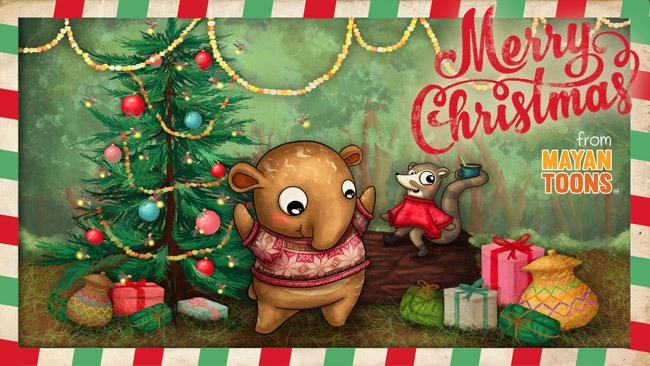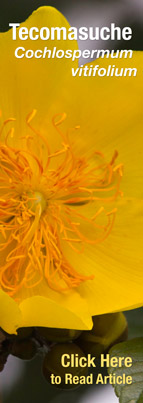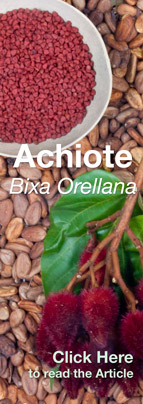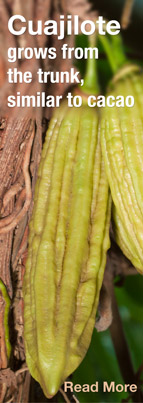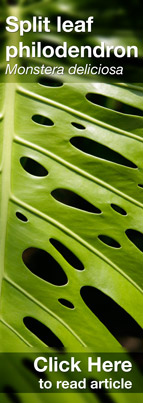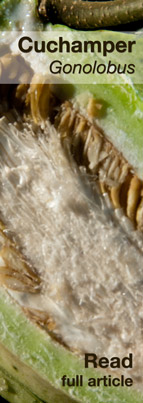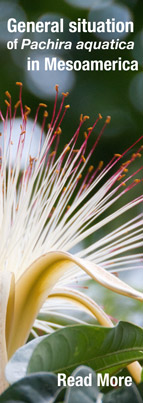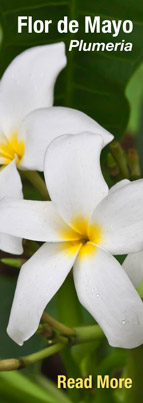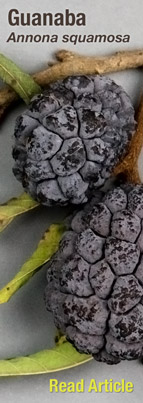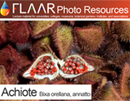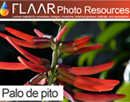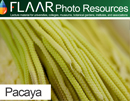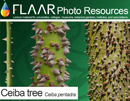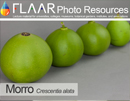When time and funding permit, each flower (each plant species) will have its own page, and its own PDF, and eventually its own PPT so that professors and students have plenty of material on Guatemala (and Honduras, etc) to study.
Heliconia adflexa, Coban, Guatemala, Hotel Monja Blanca, FLAAR, by Nicholas Hellmuth
This space is for flowers
we have recently found and photographed.
|
| Share
|
|
|
Happy Holidays, December and January New Year 2018
Posted Dec 22, 2017
FLAAR Reports has two divisions; you are now on one of the web sites of the tropical Mesoamerica flora and fauna team. If you are interested in wide-format inkjet printers, we have an entire network to explain this technology: www.wide-format-printers.org
There is also a growing team of illustrators and graphic designers who do educational children’s books (to show the world the remarkable plants and animals of 2000 years of Mayan civilization in Guatemala, Mexico, Belize, Honduras, and El Salvador).
To learn more about animals of the Mayan world, take a look at our www.maya-ethnozoology.org.
To see our newly launched cartoon book web site, look at our
www.mayan-characters-value-based-education.orgwww.mayan-characters-value-based-education.org.
Here you can see a video of Dr Nicholas interacting with a 350 pound tapir and her spotted baby.
|
|
Flower options to spread their seeds widely
(away from plant)
Posted Nov. 29, 2017
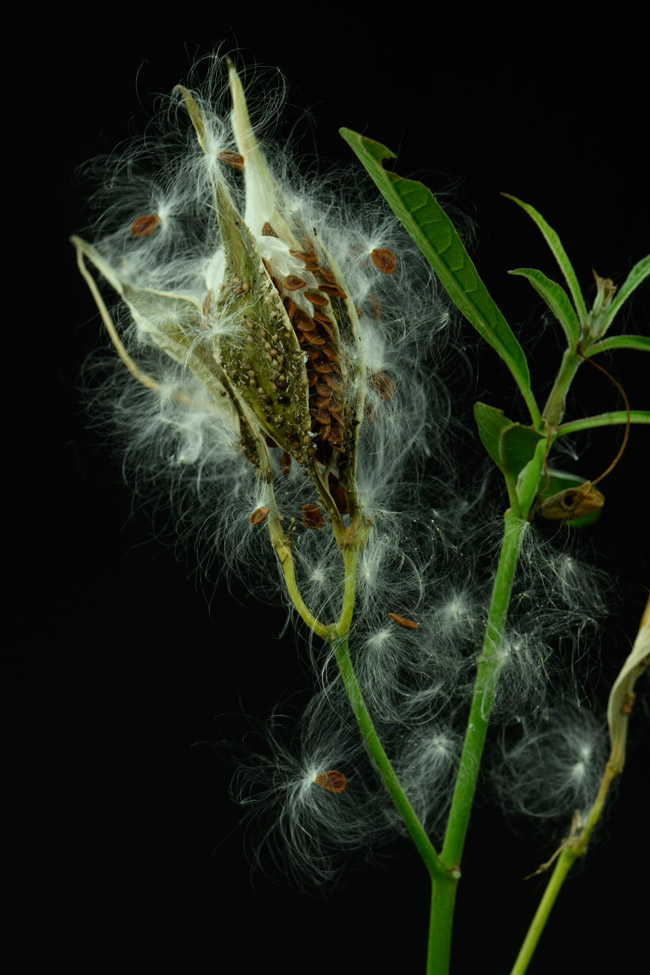 |
This is Asclepias curassavica, a tropical milkweed plant of Mexico, Guatemala and other Neotropical countries, which I call the monarch butterfly flower. We raise this in the FLAAR Mayan Ethnobotanical Garden in Guatemala. |
Every several months we at FLAAR Mesoamerica, cooperating with FLAAR (in USA), start new research themes. This week Elena suggested seed dispersal by birds and mammals. So I will add a co-project: seed dispersal techniques of plants themselves.
Here in Guatemala the giant Ceiba pentandra trees have silk-like kapok fluff to act as a floating parachute. So the seeds blow in the wind several to many meters away from the parent tree.
We will first identify all trees and bushes and plants of Guatemala which use fluff-like material to facilitate the wind blowing the seeds as far as possible. One of the obvious plants is the “monarch butterfly flower” seed: Asclepias species. We grow these in our Mayan Ethnobotanical Research Garden precisely to attract monarch butterflies.
Already five years ago we studied explosive seed dispersal in depth.
We have a video showing these pods exploding to disperse their seeds.
So season by season we will gradually add new seed dispersal themes to our research. We specialize in high-definition, well illuminated digital photography. The picture shown here is with a Nikon D810 because our Nikon D5 is mainly useful when we need super high ISO or burst-shutter setting. Erick Flores did 5X close-ups of the Asclepias seeds which we will be glad to publish as soon as outside funding comes our way.
To learn about digital camera equipment and increase your knowledge from our digital photography experience, visit www.digital-photography.org.
|
|
Senaida Ba, Q’eqchi’ student intern at FLAAR, wins scholarship
Posted Nov. 24, 2017
Senaida Ba, from the mountains between Senahu and Cahabon, was recommended to us at FLAAR by Ing. Mauro Garcia. So Senaida started as a student intern and learned quickly to do photography, to do illustrated FLAAR, and in general documented that she was a good learner.
She applied for, and today was told that she was awarded, a full scholarship to the Universidad Rafael Landívar, Campus SAN PEDRO CLAVER, S.J. DE LA VERAPAZ.
The scholarship for 6 years will result in a capable and well-trained and experienced individual in plants, forestry, and related aspects. The technical name of the program is Ambiental y Agropecuaria.
We look forward to other student interns at FLAAR to apply for comparable scholarships, and to move forward in their lives to long-lasting and well deserved careers.
Congratuations Senaida.
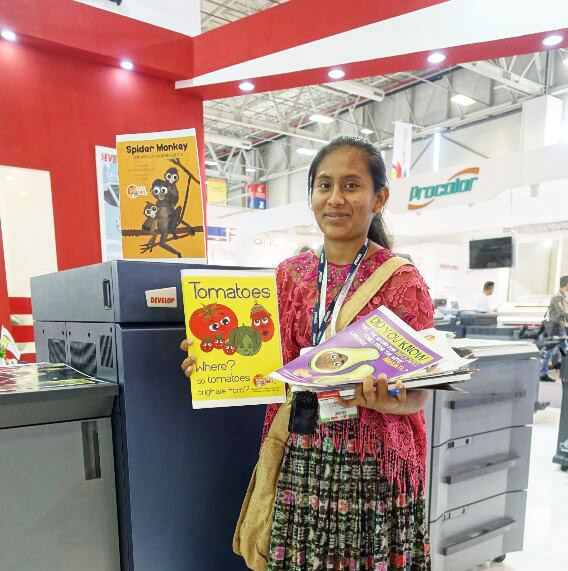 |
Senaida Ba attended three printer expos in Europe last year. Here she is at Sign Istanbul in Turkey. |
|
|
Guadalajara International Book Fair
Feria Internacional del Libro (FIL)
Posted Nov. 23, 2017
The Guadalajara International Book Fair is one of the best in the world, comparable with Frankfurt Book Fair.
Last year Dr Nicholas and graphic designer Lucia Brolo (FLAAR and MayanToons) visited FIL 2016. It was such a great event we are considering to send three to FIL 2017 (Dr Nicholas, Senaida Ba and another of our team of graphic designers for children’s books, www.MayanToons.org).
If you want to see books from publishers in Mexico, Central America, South America, USA, Canada, Europe, Middle East, Korea (and lots more countries) be sure to book a flight to Guadalajara for FIL 2017.
|
|
Happy Thanksgiving from FLAAR 2017
Posted Nov 23, 2017
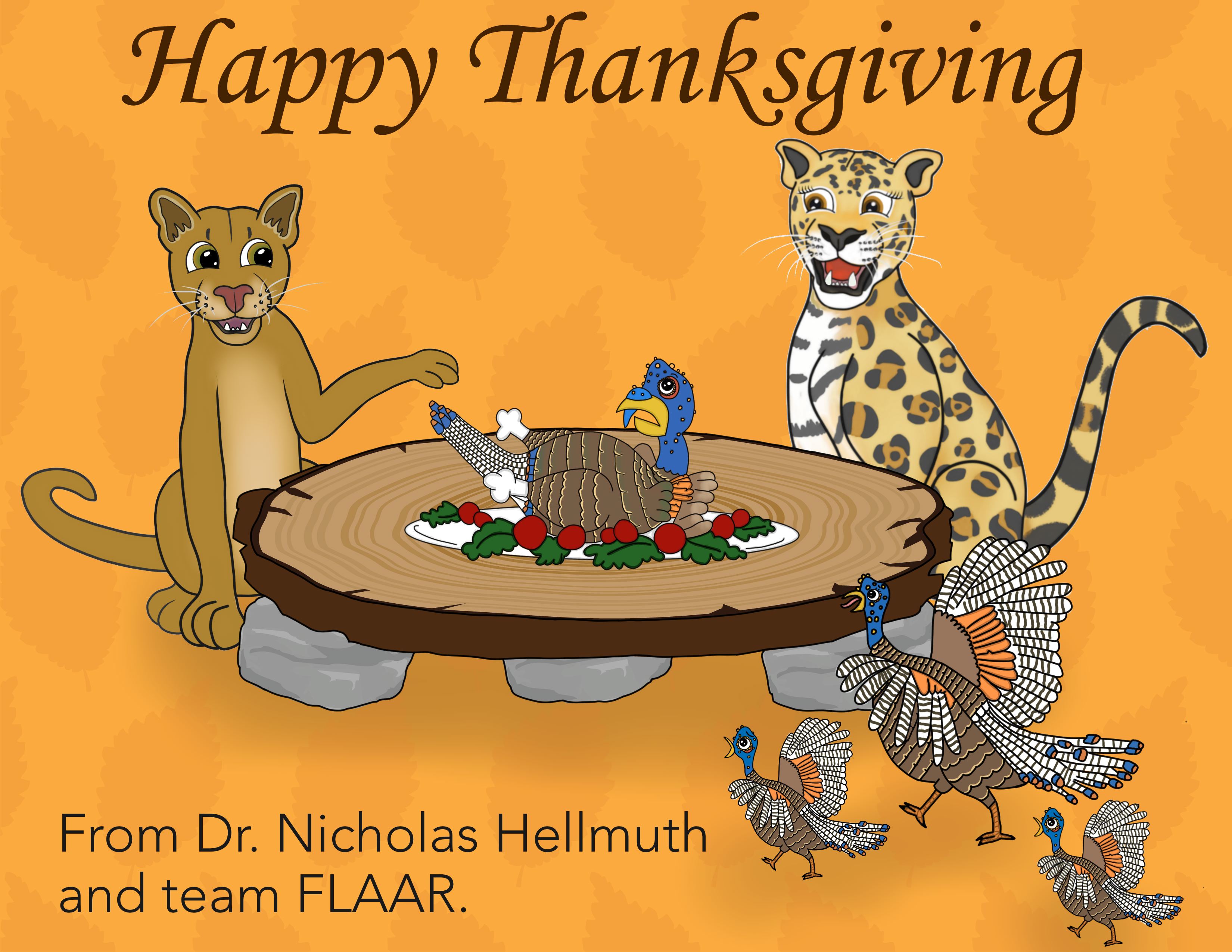
Drawing is by two of our team: university graphic design student Mellany and student intern Maria Josefina, copyright 2016 FLAAR.
The ancient Maya of southern Mexico, Belize, and Guatemala had a turkey species totally different than the North American turkey: the turkey of Guatemala is the ocellated turkey (Meleagris ocellata).
We show here two felines getting ready to have their yummy turkey feast (there are five species of felines in Guatemala: jaguar, puma, jaguarundi, ocelot, and margay).
We hope you enjoy our thanksgiving day bird feast humor. Don’t worry, we do not eat wild ocellated turkeys; they are protected species.
|
|
Maize, beans, and squash! Was this, or was this not, the heart of the Mayan diet for thousands of years.
Posted Nov 3, 2017
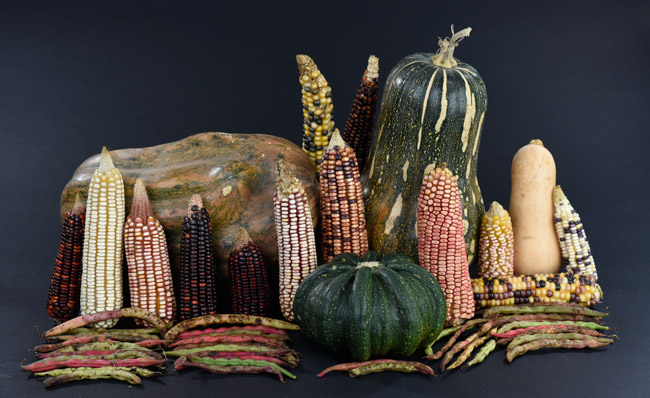 |
As a student in the 1960’s, most textbooks on the Maya featured maize, beans, and squash in their diet of Mayan foods. Then in 1966 Bronson suggested root crops were crucial to the diet, and several years later Dennis Puleston suggested ramon nuts were equally important.
I have been interested in edible foods of the Mayan people for decades and we now have a list of several hundred edible native food plants of the Mayan people: including edible flowers, edible plant stems, edible leaves, and literally hundreds of edible fruits.
Still, if you enter a Mayan house in a remote area, or if you hike through a milpa in a remote area, what plants to you actually find???
We will continue to work on this project and already have uncovered lots of great information, documented with high resolution photos (we hope you like our photo by Dr Nicholas of the maize, beans and squash that was arranged by Maria Josefina Sequen, one of our helpful Kakchiquel Mayan student interns). She is also an illustrator for www.MayanToons.org.
|
|
Happy Halloween 2017
Posted October 31, 2017
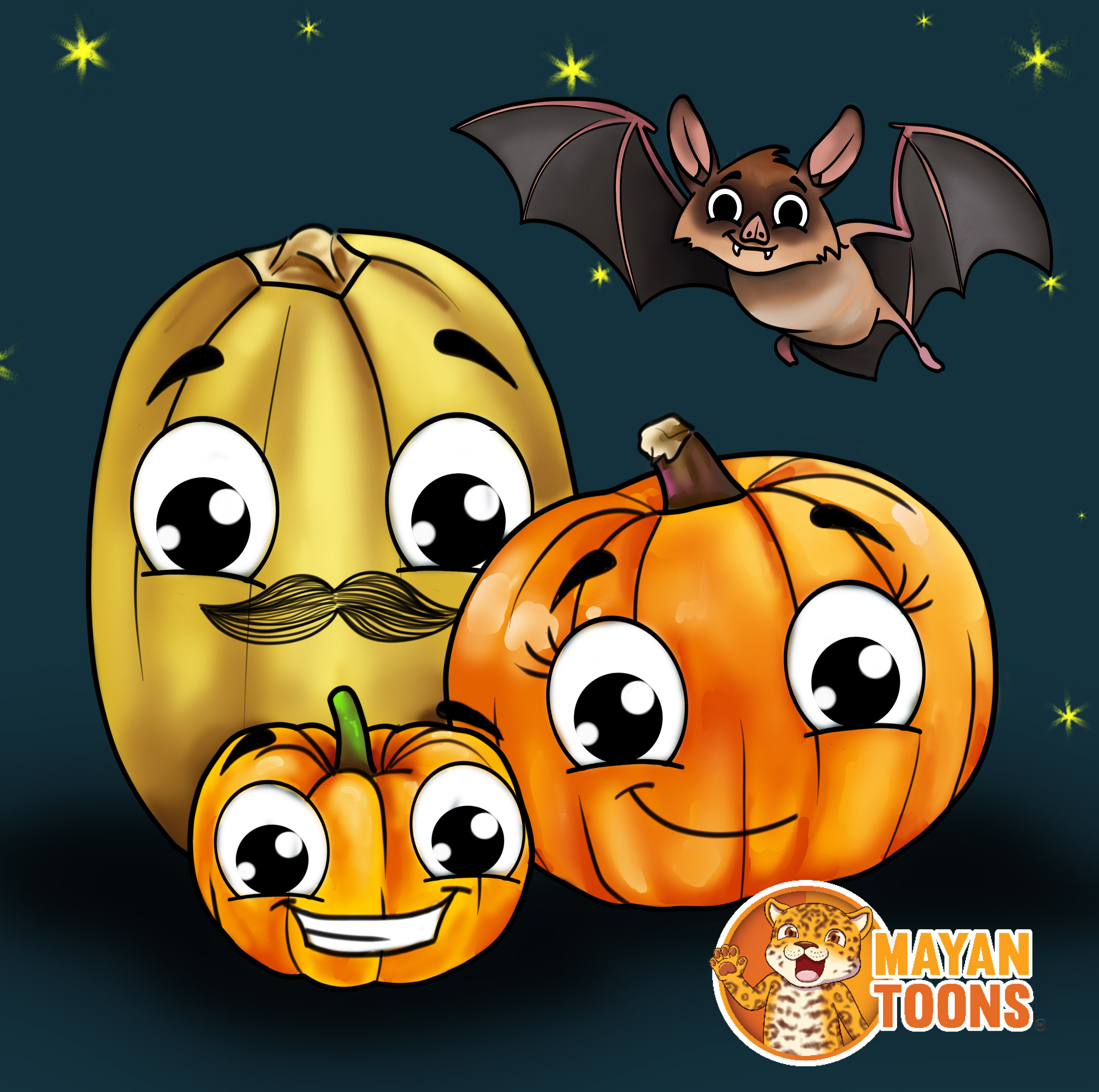 |
Ilustration by Valeria Avilés |
The bright orange pumpkins popular across USA for family Halloween decoration is a kind of squash.
Several squash were native to the Maya, Teotihuacan and Aztec areas of Mesoamerica (Central Mexico down to Costa Rica). But the pumpkin of today is descended from what grew thousands of years ago across what eventually became the USA.
In Guatemala we study lots of sizes, shapes, and colors of squash which are native to Mexico and Guatemala. But the traditional Halloween squash is the large and orange (and tastes yummy in pie or soup).
Here in Guatemala I love pepitorio, the seeds of one variety of native squash which is grown near Sayaxche, Peten (and other places in Guatemala). Roast & toast on a skillet for a few seconds, and great taste and very healthy also.
 |
We usually don't dress for halloween but this year we decided to use Tim Burton's movies as inspiration for our costumes. |
|
|
New heliconia, now identified
Updated Sept 11, 2017; Posted June 18, 2017
Specimen photographed in Ranchitos del Quetzal, Peten. Photo by Nicholas Hellmuth, Nikon D810 on a Gitzo tripod. |
We continue working on improving the lists of Heliconias of Guatemala published by eminent botanists. Not one of these lists is consistent with other lists in other botanical monographs (because the authors were not in each eco-system of Guatemala: we have found two species of wild Heliconia even in the bosque seco parallel to the Rio de los Esclavos).
The Heliconia pictured here is in the impressive garden of Ranchitos del Quetzal, near the Quetzal preserve in Alta Verapaz (directly alongside the main highway towards Coban, CA-14, km 160.5). We photographed this in June and hope to identify its species or variety soon. We also strive to learn whether it is native in nearby areas of Alta Verapaz.
In August Elena Siekavizza was able to identify this as Heliconia adflexa. Then two weeks later Senada Ba spotted the same species up on a hill as we were driving through a remote part of Baja Verapaz. We found out who owned the property and went to ask permission to take photographs; permission was graciously provided.
Heliconia leaves (of other Guatemalan species) are used to wrap tamales. Heliconia leaves of other species are used to thatch Q’eqchi’ Mayan houses in remote areas: we have found two houses thatched with platanillo so far.
It is a challenge to identify atypical heliconia plants since the nice monograph Heliconia an Identification Guide (by Fred Berry and W. John Kress, 1991), is almost three decades out of date. And, as typical of all monographs on Heliconia, is not focused on wild heliconia of Guatemala. Most of the popular books on Heliconia are on garden varieties. Our interest is to encourage growing wild species so their wild DNA can continue.
|
|
We are preparing educational material to help Mayan families learn ABCs
Posted Sept. 4, 2017
Our Mayan assistants know plants which are not in textbooks on Mayan agriculture. Our Q’eqchi’ Mayan assistants are writing articles which have information missing from peer-reviewed journals by university professors in USA and Europe.
In remote mountain villages, the kids there are capable of all this, but often the school is a 4-hour hike back-and-forth (not only no school bus, not 4WD pickup available either).
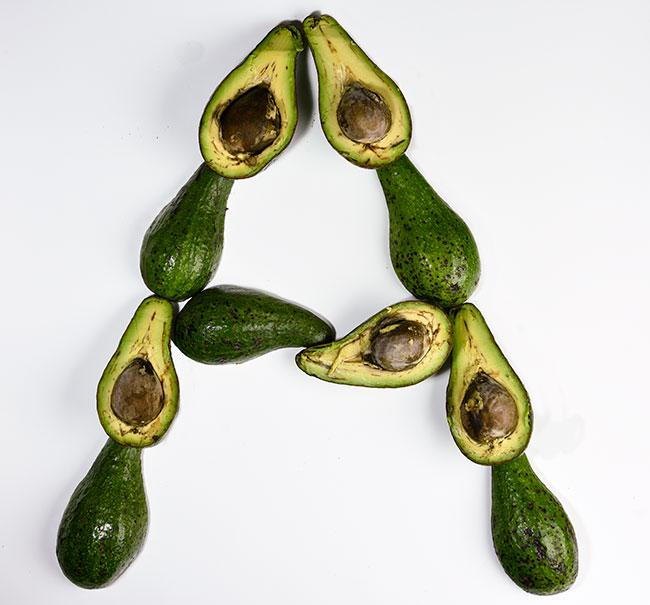 |
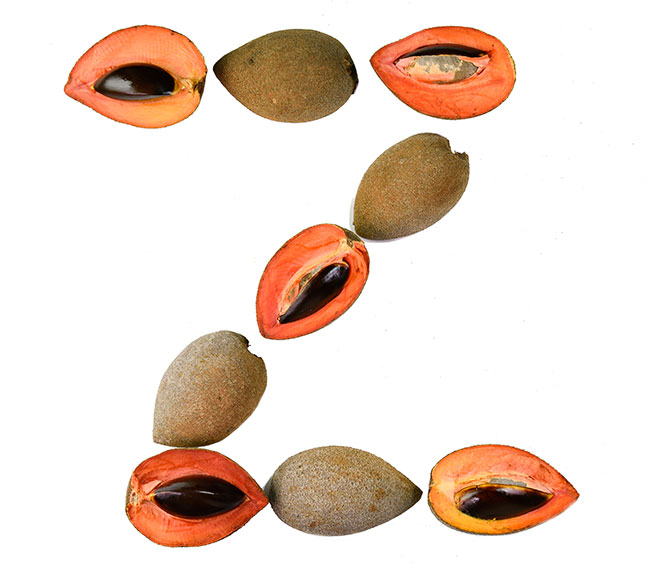 |
Here is A written with avocados. |
Here is Z written with zapotes. |
Our goal is to have ABC books and also animated videos (so people can watch them on their mobile phones). We will use local plants to form each letter of all the ABCs. |
|
We have initiated a series of programs to help education of children in remote areas.
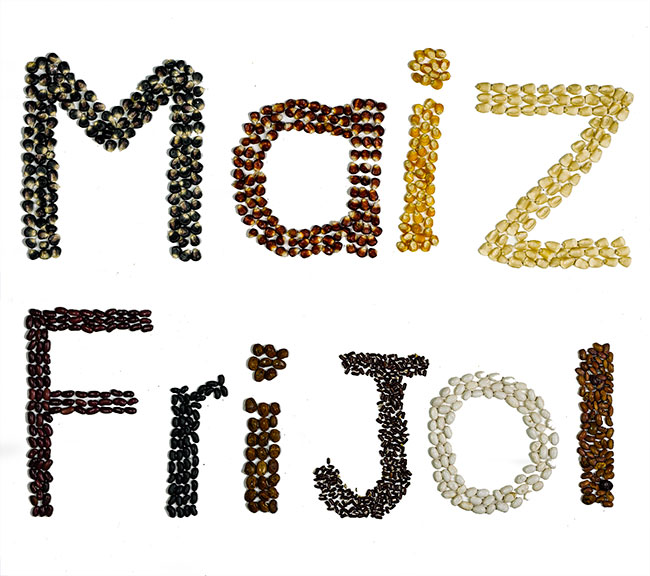 |
In addition to A, B, C…W, X, Y, Z we will also of course spell out entire words. Once funding is available, we will also indicate which vitamins, minerals, and other healthy proteins are in each natural food. This way we can help parents (and grandparents) learn about vitamins, minerals, and food values, in addition to learning how to read. We can also do these educational concepts in the local Mayan languages, such as Q’eqchi’, Pokomchi, Kaqchiquel and of course we would want to do all the languages of Guatemala. We welcome contacts with companies, foundations, and individuals who would like to help us: FrontDesk “at” FLAAR dot ORG |
|
|
Lots of beautiful flowers, including orchids, along the roadsides of Guatemala
Posted Sept. 1, 2017
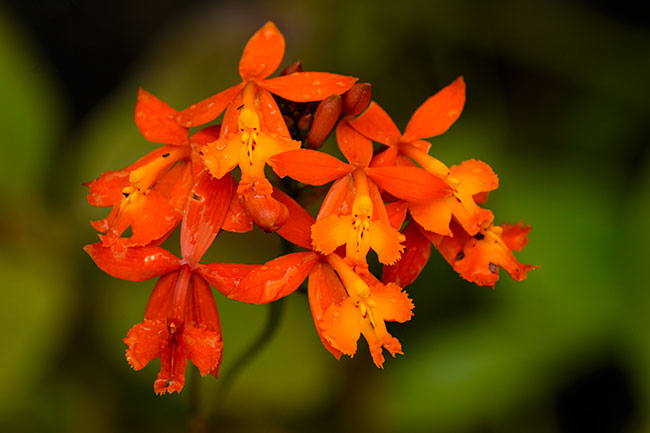 |
Driving the back road between Senahu to Tucuru you find lots of orchids. All of Alta Verapaz is moist and most is hills and mountains and rivers. So lots of eco-systems for orchids. Although we tend to associate orchids with trees, actually there are terrestrial orchids also in Guatemala (precisely along the sides of roads in Alta Verapaz and many areas of the Highlands to the west. |
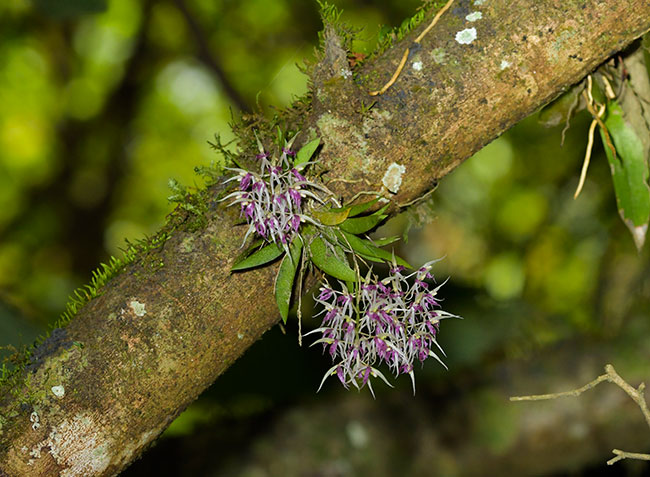 |
Driving a road (instead of a highway) from Purulha towards Salama (Baja Verapaz) you find lots of orchids in the humid areas (Salama itself is dry, so lots of cacti). We found orchids in trees, and we thank Alejandro Sagone for knowing their botanical names. But there were also orchids growing in the ground (there are also terrestrial bromeliads in Guatemala two of which are edible). |
Anywhere and everywhere along most highways in Guatemala you can find a rainbow of colors of wild flowers. In Alta Verapaz and Baja Verapaz (if in the cloud forest areas) many of these roadside flowers are ORCHIDS. Yes, WILD orchids by the thousands for kilometer after kilometer.
Many of these roads require 4WD vehicles (and not SUV; they are not high enough to survive the rocks which will shred their axels and anything else low on the chassis).
Parque Nacional Yaxha, Nakum and Naranjo
Carnivorous Plants
Plants of Municipio de Livingston, Izabal
- Acrostichum danaeifolium, giant leather ferns
- Bellucia Pentamera
- Bibliography on Grias cauliflora
- Bibliography on Licania platypus
- Bibliography on Mangle negro (Avicennia germinans) L.
- Bibliography on Montriacardia arborescens
- Bibliography on Typha domingensis and Thypha latifolia
- Conocarpus erectus, white mangrove
- Edible Wetlands Plants, Hotel Tortugal
- Heliconia latispatha
- Heliconia wagneriana
- Manicaria saccifera Confra palm
- Neotropical trees of Guatemala need protection
- Nymphoides indica, waterlily flowers
- Pachira aquatica, zapoton
- Bibliography on Pithecellobium Mart., Neotropical trees of Mesoamerica
Ecosystems, Wetlands Aquatic Plants
Smartphone Camera Reviews
Bushes and small trees
Fungi and Lichens
Orchids
- Bibliography Bletia purpurea, aquatic orchid
- Bibliography, Epidendrum radicans
- Bibliography on Habenaria Orchids from Yaxha
- Bibliography, Lycaste virginalis var. alba.
- Bibliography, Macroclinium bicolor
- Bibliography, Prosthechea cochleata
- Bibliography Sobralia macrantha, Lirio de San Juan
- Bibliography, Sobralia xantholeuca
- Bibliography on Terrestrial shade orchids from Guatemala
- Bibliography on Terrestrial sunny orchids from Guatemala
Botanical Terms
Maya and Aztec flavorings for cacao, cocoa, chocolate
- Achiote, Bixa orellana
- Bibliography on Achiote, Bixa orellana
- Bibliography on Esquisúchil, Bourreria huanita
- Bourreria huanita
- Cassia grandis, bucut
- Chile Chocolate
- Chile Chocolate (Capsicum annuum var accuminatum)
- Chiranthodendron pentadactylon
- Cymbopetalum penduliflorum
- Guazuma ulmifolia
- Haematoxylum brasiletto
- Piper auritum, hoja santa
- Piper species
- Quararibea funebris
- Sterculia apetala, castaño
- Tagetes sp., Marigold
- Talauma, a variant of Magnolia
- Vanilla orchid
- Virola and nutmeg
Cacao, cocoa, chocolate
Consulting cacao & Theobroma species
Tobacco Ingredients of Aztec & Maya
Trees of Mesoamerica
- Bibliography on Acacia dolichostachya, Wild tamarind
- Bibliography, Bellucia costaricensis
- Bibliography, Bucida buceras
- Bibliography on Coccoloba belizensis Standl.
- Bibliography on Cojoba sp. and Cojoba arborea
- Bibliography, Ficus.
- Bibliography on Haematoxylum campechianum and H. brasiletto
- Bibliography on Hibiscus pernambucensis
- Bibliography on Ipomea murucoides
- Bibliography on Lacmellea standleyi, lechemiel
- Bibliography on Leucaena leucocephala
- Bibliography on mangle rojo (Rhizophora mangle)
- Bibliography on Manzanillo, Alseis yucatanensis Standl.
- Bibliography on Matilisguate, Tabebuia rosea
- Mangrove swamp Trees
- Bibliography on Ruagea insignis
- Bibliography on Pterocarpus officinalis
Bombacaceae, Bombacoideae
Tropical Fruits of the Maya
- Avocado Hass
- Bibliography on Coloc, Talisia floresii
- Bibliography, Dichogamy of avocado species
- Bibliography on Guayo, Talisia olivaeformis
- Bibliography on Laetia thamnia, Bakelac
- Bibliography on Maracuyá, Passiflora quadrangularis L.
- Bibliography on Punica granatum L., Granada
- Cashew
- Cuajilote, Parmentiera aculeata
- Granada
- Guanabas and Annonas
- Guava, Guayaba, Psidium guajava L
- Introduction to Papaya
- Nance a fruit of prehispanic Guatemala
- Passion flowers and fruits
- Passion flower, giant fruit
- Talisia floresii, Sapindaceae
- Carica Papaya Bibliography
Tropical Nuts
Spices, condiments, food coloring
Medicinal Plants
- Aristolochia, The largest flower in Guatemala, Bibliography
- Asclepias curassavica, bibliography
- Bibliography on Ciricote, Cordia dodecandra
- Bibliography on Contrahierba, Dorstenia contrajerva
- Bibliography on Falso hibisco, Malvaviscus arboreus
- Bibliography on Huele de noche, Cestrum nocturnum
- Bibliography on Lirio araña, Hymenocallis littoralis
- Bibliography on Roble Prieto, Ehretia tinifolia
- Bibliography, Tithonia diversifolia
- Canak
- Calliandra general info
- Guava, Guayaba
- Magnolia and Taluma
- Mayan medicinal plants
- Piper
- Tecomasuche, Coclospermum vitifolium
- Bibliography on Sufricay, Malmea depressa
- Bibliography on Wigandia urens
Underutilized edible plants
Edible Plants of the Mayan World
- Acacia, subin, bullhorn acacia
- Bibliography, Annona muricata
- Bibliography, Annona purpurea
- Bibliography, Annona reticulata
- Bibliography on Chipilín, Crotalaria longirostrata
- Bibliography on Chirimoya, Annona squamosa
- Bernoullia flammea
- Canna indica, tamale wrap
- Cuchamper, Gonolobus
- Guava, Guayaba
- Bibliography, Gonobolus sp.
- Bibliography, Parmentiera aculeata
- Pacaya palm Chamaedorea tepejilote
- Split leaf philodendron, Monstera deliciosa
Plants and trees used to produce incense
Utilitarian Plants
- Bibliography, Acacia farnesiana
- Bibliography on Aechmea bromeliifolia
- Bibliography on Agave americana
- Bibliography, native Agave species from Guatemala
- Bibliography on Anthurium crassinervium (Jacq.) Schott
- Bibliography on Balsa, Ochroma pyramidale
- Bibliography on Bamboo, Guadua longifolia (E.Fourn) R.W.Pohl
- Bibliography, Crescentia alata
- Bibliography, Crescentia cujete
- Bibliography on Hule, Castilla elastica
- Blepharidium guatemalense, irayol blanco
- Crescentia alata, Crescentia cujete
- Tecomasuche, Coclospermum vitifolium
- Bibliography on Coxte, Colubrina arborescens
- Bibliography on Madre cacao, Gliricidia sepium
- Bibliography on Tillandsia usneoides
Flowers, edible
Camera Reviews for Photographing Flowers and Plants
Toxic plants
Trees with conical Spines
Flowers native to Guatemala visible now around the world
SUBJECTS TO BE COVERED DURING NEXT 6 MONTHS
Grains
Fruits (typical misnomer mishmash of Spanish language)
Other Fruits (primarily fruits from trees)
Fruits (vines or cacti)
Flavoring, herbs, and spices
Flowers, sacred
Plants which are sacred
Plants mentioned in myths
plants to produce Alcohol
Plants used for drugs
Plants or trees that are used to produce incense
Most common introduced plants (not native)
Glossaries

















